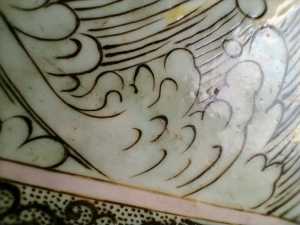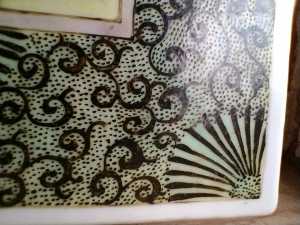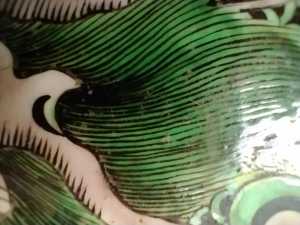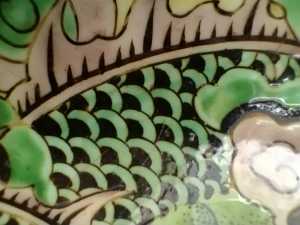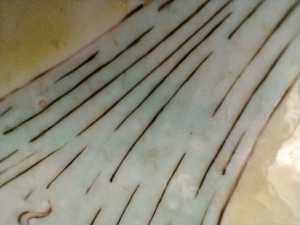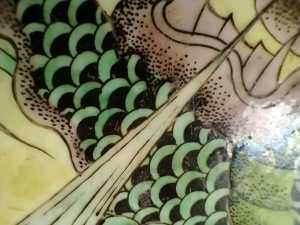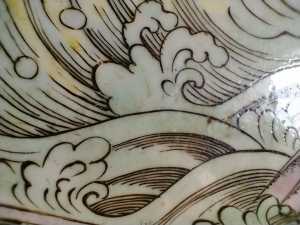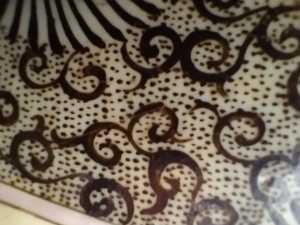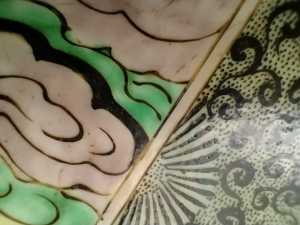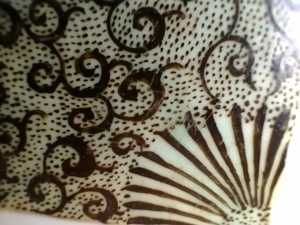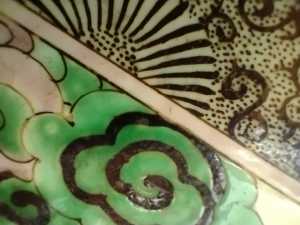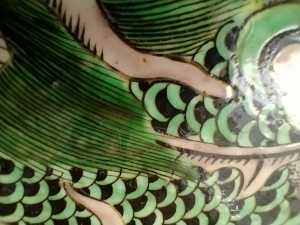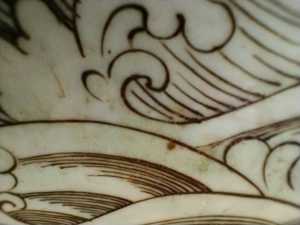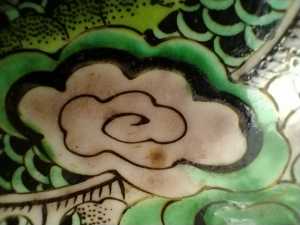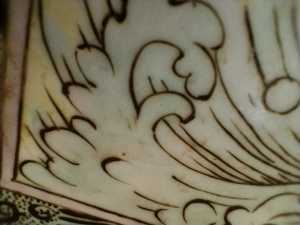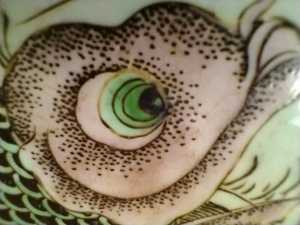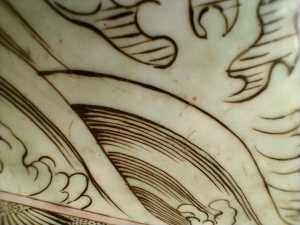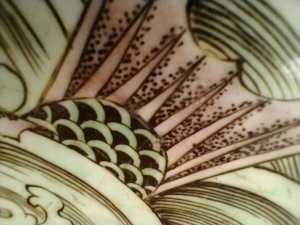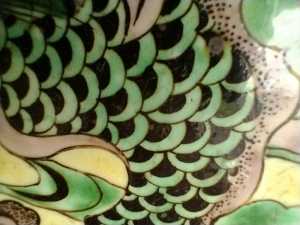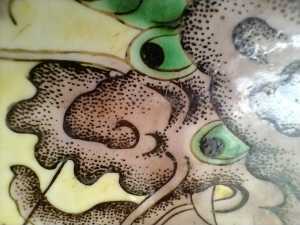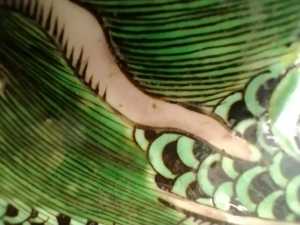The Chinese and Asian Art Forum. For Fans, Collectors and Dealers.
 Basic Rules For the BidAmount Asian Art Forum: Talk about whatever you want. You can even discuss and offer things that are for sale if they are authentic. Maximum image file size per post is 2 MB. Images of 700pxl x 700pxl are optimal if saved at a medium resolution. Be respectful of others and enjoy yourself. Click the YouTube link for a brief tutorial on using the forum. You can also EMBED Videos by cutting and pasting from You-Tube, Vimeo etc.
Basic Rules For the BidAmount Asian Art Forum: Talk about whatever you want. You can even discuss and offer things that are for sale if they are authentic. Maximum image file size per post is 2 MB. Images of 700pxl x 700pxl are optimal if saved at a medium resolution. Be respectful of others and enjoy yourself. Click the YouTube link for a brief tutorial on using the forum. You can also EMBED Videos by cutting and pasting from You-Tube, Vimeo etc.
NOTE: To post an item or add a new post, click open the category title from the FORUM LIST, and CLICK the Blue ADD TOPIC button.
Yes, that last one is even more worthy! He is amazing and beautifully drawn.
Interesting thoughts on the dragon being incompletely transformed, it is not a consideration that I have come across before, although I have read the idea behind the depiction of the dragon and carp. I did notice his fangs, I was thinking of his front teeth.
This has been a interesting discussion, I am hoping there will be a conclusion.
OK, SO I've taken some pictures of the wear to the enamels to see what you guys make of it. Personally I don't think it's simulated, usually simulated wear (in my limited experience) is not as consistent with the wear on this plaque, which is sporadic and also all over the place, no concentrated in certain areas and looks like general wear and tear (knocks) from over the duration the piece has been around, there are some bubbles which are hard to see in the photos (sorry!) and some bubble pits and staining which to me looks authentic, but I am no expert...
Hi all,
This is very interesting and much out of my area of (self-proclaimed) expertise. I won't add my thoughts on age because I won't feel it will further the discussion, but I do want to challenge the idea of bubbles as an indicator of age. I pulled two vases out of the electric kiln yesterday, one with larger bubbles than my Kangxi and 19th c. pieces, and the other with numerous bubble pits. Also, both with very uneven craquelure. I've also found that when it comes out of the kiln and cools quickly, it cracks in one way, and if I put it in the freezer and pour boiling water, they produce a different network of craquelure...
I would shy away from using these features in isolation ... as has been mentioned before. There are techniques to replicate certain features, so for it to be genuine, it must have 100% of the characteristics of older pieces including its design and execution of such design. Every feature, including design and its execution, wear, glazing, supports, bubbles, and craquelure can be replicated in the old style/methods, so we must find these areas of human error to judge authenticity. At least in the pieces that were intentionally made to deceive. Just my two cents.
That said, I like your plaque, Thomas. I find it very attractive. I had the same initial thoughts as Brian and Julia on the reversed direction of the scales but I can see it is plausibly in the correct direction. Whether it's old, I don't know and am very excited to see where this goes.
Kind regards,
John
@bartholin Hi John Thanks for joining the discussion. I'm aware of the genius of modern Chinese fakery.. I believe there's a good documentary about it, but I can't remember what it's called and I haven't seen it. If anyone knows what I'm referring to please let me now so I can dig it out and watch it... I think it's worth pointing out that the Plaque, as well as cracks also shows wear to the enamels, where (especially in the blacks) you can see the paint has worn away to reveal the layers below.. and the discolouration of all the colours. I'm sure it can all be copied nowadays, but I'm no expert so just hoping the finer details will capture someone who knows eye.. In the meantime I'm going to look for a good reference to the way the dragon is painted, all be it I don't have a problem with the form (the scales in different direction, the head attached or the claw coming down towards the head of the dragon) It's more the way the scales are painted that I'm having trouble finding. Also I will obviously send it to Peter at some point soon for his appraisal and may well take it to Bonhams or the V&A to see if they have any insights.
@johnshoe I've obviously got under your skin. Sorry, really.
Your taking my 'facts' remark out of the context it was used, ommiting the more constructive remarks I've made before and after my 'facts' comment, and you're concluding that I think I'm the only one privy to the 'facts'. Not at all. I'm often wrong, and often I find that I'm wrong from the finding of a beginner (not that Thomas is a beginner).
However, if a discussion (and this thread has been a very good discussion) starts to drift into practices that actually can do more harm than good for those studying the trade, I think it is very important that someone pulls the emergency brake. I've seen other people do it... this time it was me.
Now, that doesn't mean my assessment of authenticity is right, but it does mean my method of assessment is the right one to take....that is, one based upon factual records that support the hypothesis of authenticity, and not supposition based upon subjective interpretation of similarities in design.
What I saw happening was Thomas was looking at Kangxi period examples for similar qualities in design, then concluding that since it was not a perfect match, that it must be a later version from the 19th c. That is a false conclusion based upon pure speculation and wishful thinking.
The only conclusion one can draw from comparing a subject piece to Kangxi period pieces, and then finding there are differences, is that the subject piece is not Kangxi. There is no other conculsion to draw.
After my objection (and perhaps purely coincidental), Thomas cited a similar sized plaque from a reputable source described as 19th c., which proved that it was possible to have a 19th large plaque without the back ridges, disproving one of the major concerns I had. I acknowledge and congradulated him for it.
Back on track to a more constructive discussion, right?
You'd think so, but again I see Thomas is referencing Kangxi examples as some type of support for his hypothesis on his plaque.
John, you're right that my words could be taken as aggressive - I prefer passionate.
My voice is certainly not the only one that matters in this or any other case, so perhaps taking my hands off the steering wheel in this discussion, and seeing what happens, is best.
@greeno107 Hi Tim, I'm not ruling out anything, including that it's possible the piece could be 18th century...
You sighted the Plaque without supports and mentioned you thought it could be 18th century
Although, I do agree with your methods of research and I think everyone on this forum is lucky to have you as a member, to share you knowledge.
It's not necesary for anyone to get emotional about these things, afterall we are learning from each other and a degree of objectivity in necesary.
We all need to just to listen to each other carefully, often written communication can easily be taken the wrong way and lead to un-necesary arguments.
@thomasumjohnson And there you have it! If you give equal credit to facts and unfounded speculation, then you can achieve any conclusion you want. Maybe it's ancient Egyptian!
Thomas, you have a beautiful plaque and you got it for a great price. Best of luck with your research!
@greeno107 OK thanks Tim, I do appreciate your input.. Like I say we are all lucky to have you here..
So this dragon has scales painted in the same way, in two tone. Most if not 90% don't. Can't say if the sighted piece is authentic or not:
Also this one:
https://www.christies.com/lot/lot-5891198
Thanks for the closer pictures. I would like to ask members do these enamels look correct for 19th century? Since I own over 100 19th century pieces and some very high quality. The enamel are not bright thick and look watered down. I do own a vase from about 1950 and the enamel is identical. Can we focus on the enamels. As for the wear my 1950 vase has the same wear like the glaze is softer. But my question is why so much wear we are not talking about a bowl or plate it sits on a wall.
But my question is why so much wear we are not talking about a bowl or plate it sits on a wall.
Good question, my hopeful response would be that it's not framed or mounted, so is open to being knocked about, as it is I have no way of mounting it to a wall..
Brian brings up a great point that I think is really difficult to answer. I'm skeptical of the idea of a huge thin plaque being knocked about - it seems odd. It also would be difficult to imagine this would have accumulated this much wear over time being face down unmounted. An alternative is that it was face up and subject to objects placed on top of it and moved around over the years. Given its nice rendering, I don't think anyone would've disrespected it this way if it were genuine.
Subject to any other explanations, I think the other much more likely alternative is the wear being applied intentionally.
@bartholin At the moment its learning agains a wall in my room, becasue I want to see it..
I've mentioned this before, but If a talent artist wanted to make a fake, why not fake a known style / known period, rather than making an original work, one which people find hard to place. It would be much easier to make money faking something that was easily categorised. My feeling is that it wasn't made to deceive for this reason and the artist was making a work of originality for the sake of art not money. If money was the motive then make something that's easy to place. For this reason I don't think it's made to trick anyone but a genuine attempt at making an artwork. How old it is, is another question
My apologies, Thomas - when I said "I don't think anyone would've disrespected it this way if it were genuine," I did not mean you were disrespecting it. I meant that, as Brian pointed out, a plaque is decorative and not useful, so it's difficult to imagine a decorative object for display would accumulate that much wear on the face of it. I was trying to find an explanation for how the plaque would've been subject to that kind of wear over the years if it was genuine. It was in no way a comment on how you are handling it, as we are simply studying it here.
Thanks for visiting "The BidAmount Asian Art Forum | Chinese Art"
If you sell on eBay, or have a shop feel free to post images and descriptions and links.
Check back often for discussion about the latest news in the Chinese art and antique world. Also find out about the latest Asian art auctions at Sotheby's, Christie's, Bonhams and Tajans.
Auction results for: fine porcelain, ceramics, bronze, jade, textiles and scholar's objects. As well as Japanese, Thai, Vietnamese and other Asian cultures.
Thank you,
Peter Combs
Topics and categories on The BidAmount Asian Art Forum | Chinese Art
Kangxi vases, Kangxi dishes and chargers, Kangxi ritual pieces, Kangxi scholar's objects, Qianlong famille rose, Qianlong enamels, Qianlong period paintings, Qianlong Emporer's court, Fine porcelain of the Yongzheng period. Chinese imperial art, Ming porcelain including Jiajing, Wanli, Xuande, Chenghua as well as Ming jades and bronzes.
The BidAmount Asian Art Forum | Chinese Art
A free Asian art discussion board and Asian art message board for dealers and collectors of art and antiques from China, Japan, Korea, Thailand, Cambodia, Vietnam and the rest of Asia. Linked to all of the BidAmount Asian art reference areas, with videos from plcombs Asian Art and Bidamount on YouTube. Sign up also for the weekly BidAmount newsletter and catalogs of active eBay listing of Chinese porcelain, bronze, jades, robes, and paintings.
The art of calligraphy - and for the ancient Chinese it certainly was an art - aimed to demonstrate superior control and skill using brush and ink. Calligraphy established itself as one of the major Chinese art forms during the Han dynasty (206 BCE - 220 CE), and for two millennia after, all educated men were expected to be proficient at it.
The Museum’s collections of Asian art span nearly five millennia and encompass the cultures of China, the Himalayas, India, Japan, Korea, and Southeast Asia. In 2007, the Museum launched an initiative to create dedicated galleries for the collection, beginning with a gallery for the arts of Korea ...
Chinese art is full of symbolism, in that artists typically seek to depict some aspect of a totality of which they are intuitively aware.
China Online Museum is the finest online museum of Chinese art. It features Chinese calligraphy, painting, ceramics, bronzes, carving, and other artworks.
Chinese Ceramics & Works of Art. Overview Upcoming auctions Contacts Auction results ... Christie’s sales of Chinese ceramics and works of art showcase centuries of Chinese history. Held throughout the year in London, New York, Paris and Hong Kong, they attract a wide audience of collectors and connoisseurs vying for pieces as diverse as ...
Explore Asian Art Week. Contact the Specialist Department. Chinese Paintings ... Senior Specialist, Head of Sale. [email protected]. Tel:+1 212 641 5760. Bid in-person or online for the upcoming auction:Fine Chinese Paintings on 10 September 2019 at New York. Bid in-person or online for the upcoming auction:Fine Chinese Paintings on 10 ...
Discover an abundance of must-see art from all corners of a vast continent at Christie’s NY Asian Art Week. From contemporary classical and Chinese paintings to works with exemplary provenance from the Art Institute of Chicago, our Rockefeller Paza galleries will be full of ancient treasures and contemporary masterworks in a salute to the vibrant arts of Asia.
Sold to benefit The Art Institute of Chicago’s Asian Art Acquisition Fund, the sale features 84 lots with a focus on Ming and Qing porcelains, and offers a rare insight into the taste for collecting Chinese ceramics and works of art in the Midwest from the end of the 19th century through the 1980s. Highlights include two Wanli wucai garlic-head vases, a Qianlong mark and period, blue and ...
Specialist, Chinese Paintings, Christie's London Dr Malcolm McNeill is a Specialist in Chinese Paintings at Christie’s, based in London. He previously worked as an assistant curator of the Chinese collections and the Victoria and Albert Museum in London, as a researcher at the British Museum, and as a translator and tour guide at the National Palace Museum in Taipei.
The Christie's Education 2020 Conference: The Chinese Art Market 18 Jun 2019 Christie’s Education is delighted to announce our first international academic conference in Asia which will take place in Hong Kong from 26-27 November 2020 at the Hong Kong Convention and Exhibition Centre and will run in parallel with Christie’s Hong Kong Autumn Auctions.
The summer Chinese Art sale in Hong Kong will feature works of art from several private collections, including Qing porcelains and textile from the collection of the legendary Chinese art dealer A. W. Bahr (1877–1959), fine gilt bronze Buddhist sculptures from an old Hong Kong collection, an East Asian collection of Qing dynasty wine cups and jades, and a Japanese collection of Song ceramics ...
Sotheby's Chinese Works of Art Department holds two auctions each year in London, New York, Hong Kong and Paris.
Chinese Art - View Auction details, bid, buy and collect the various artworks at Sothebys Art Auction House.
With more than 340 Chinese works of art dating from the Neolithic to the Republic periods, highlights of this sale include a selection of Qing Imperial monochromes from the collection of Arnold and Blema Steinberg, early ceramics from the Art Institute of Chicago and Chinese porcelain and works of art from the collection of Henry Arnhold.
Results: Sotheby's Asia Week achieved $52.4 million in six strong auctions, exceeding pre-sale estimates. With 76.5% of lots sold and 60.3% of lots surpassing high estimates, the Asian art sales at Sotheby's indicate continued collector interest in the finest works of art from China, India and and the Himalayas.
Today's sale of Important Chinese Art will proceed as planned with sessions at 10 AM and 2 PM EDT. Sotheby's will be monitoring the weather conditions throughout the day and will be available to coordinate alternative bidding options should conditions make it difficult for clients to attend the auction in person.
Bonhams Chinese Art department is renowned for offering the finest works of art representing the richness and breadth of China's artistic heritage, particularly Imperial porcelain, white and spinach green jades, cloisonné and Buddhist art. Specialised international auctions are held globally, including London, Hong Kong and San Francisco.
Bonhams : Chinese Works of Art We use cookies to remember choices you make on functionality and personal features to enhance your experience to our site. By continuing to use our site you consent to the use of cookies. Please refer to our privacy and cookie policies for more information.
Bonhams Fine Art Auctioneers & Valuers: auctioneers of art, pictures, collectables and motor cars. We use cookies to remember choices you make on functionality and personal features to enhance your experience to our site. By continuing to use our site you consent to the use of cookies. ... Chinese Art (US) General enquiries
Bonhams : Fine Chinese Art We use cookies to remember choices you make on functionality and personal features to enhance your experience to our site. By continuing to use our site you consent to the use of cookies. Please refer to our privacy and cookie policies for more information.
Bonhams Fine Art Auctioneers & Valuers: auctioneers of art, pictures, collectables and motor cars Bonhams : Asian Art We use cookies to remember choices you make on functionality and personal features to enhance your experience to our site.
Bonhams are international auctioneers of fine Chinese and Japanese art. We specialise in rare Imperial and Export Chinese ceramics and works of art, as well as Japanese ceramics, fine and decorative works of art from the Neolithic Period to the 20th century. View on map
Bonhams Fine Art Auctioneers & Valuers: auctioneers of art, pictures, collectables and motor cars. We use cookies to remember choices you make on functionality and personal features to enhance your experience to our site. By continuing to use our site you consent to the use of cookies. ... Asian Art Bonhams. Work. 22 Queen St.
